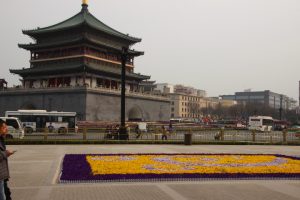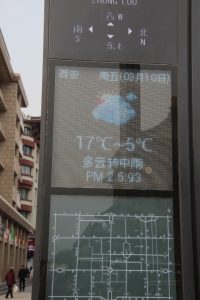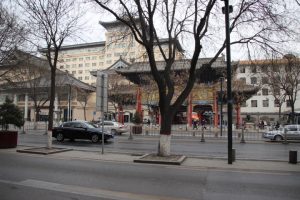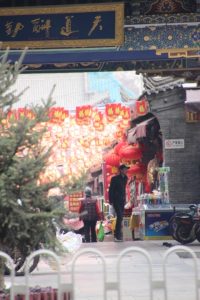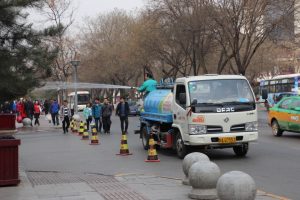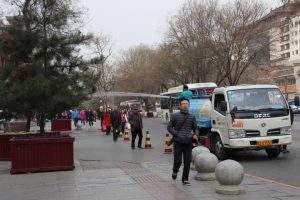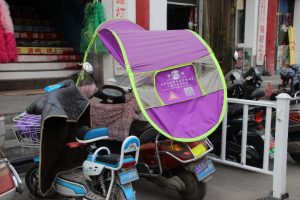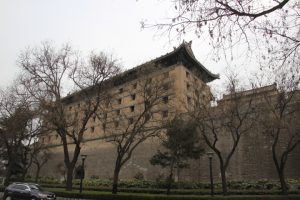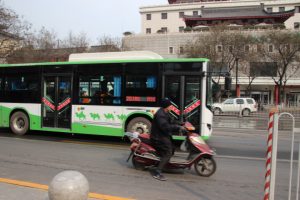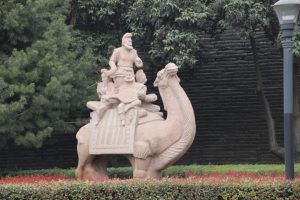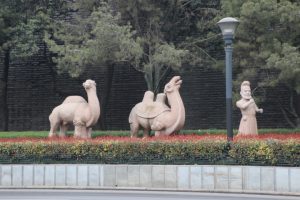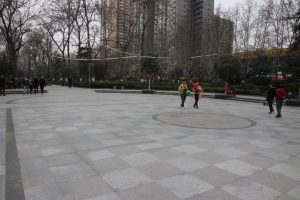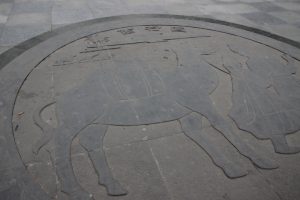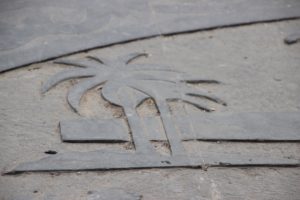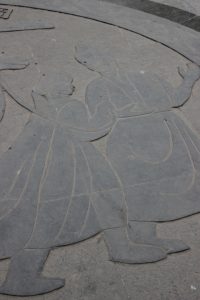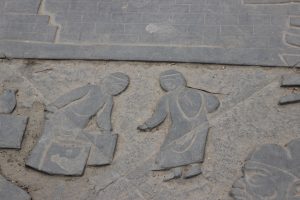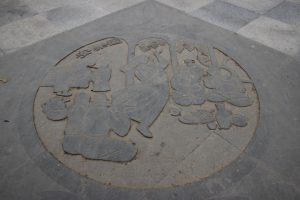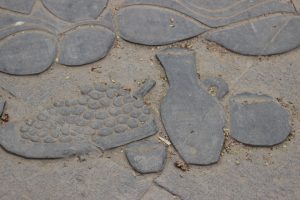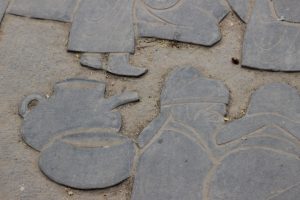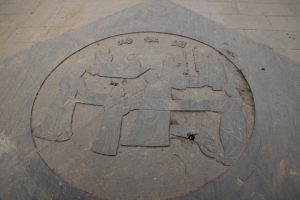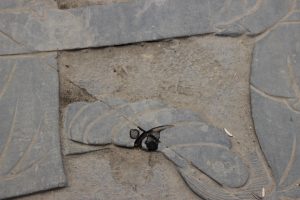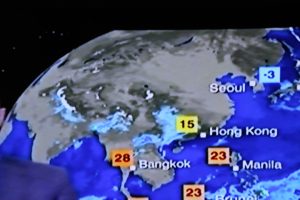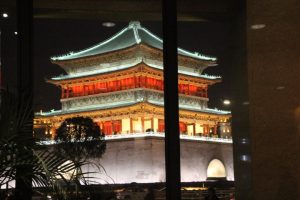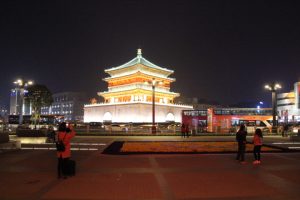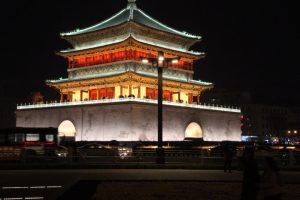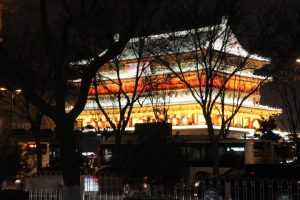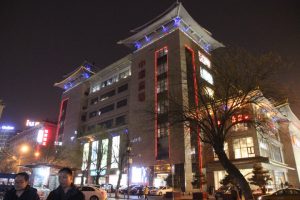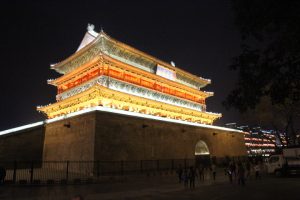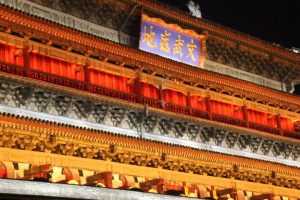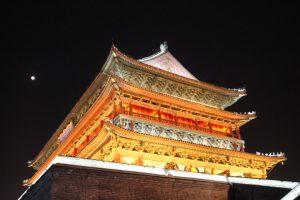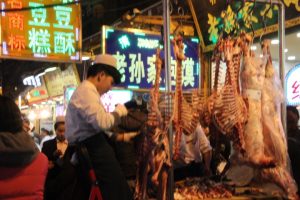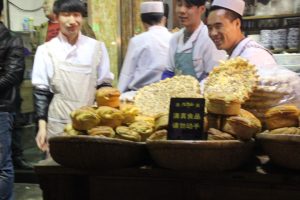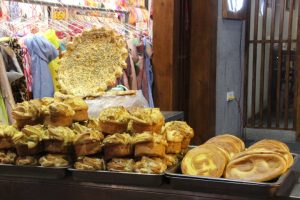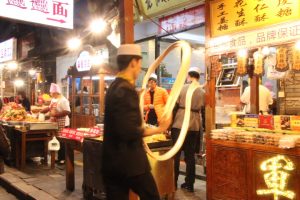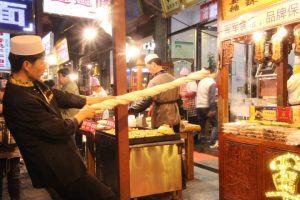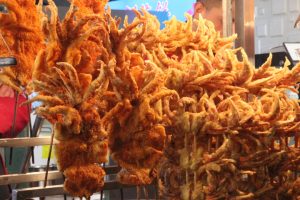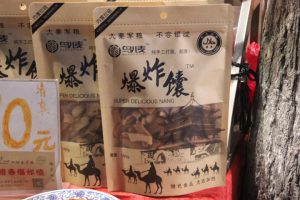Xi’an was the political heart of China until the 10th century, but long before this it was the beginning/end of the Silk and Spice Routes, meaning that the city became a mix of cultures and religions as well as the home to poets, monks, merchants and warriors. Today’s city walls date from the Ming dynasty (14th century) and enclose trading areas such as the Muslim Quarter. In recent years the city has been campaigning for the Silk Road to be added to the Unesco World Heritage list. Later silk and spice road trade extended overland to Afghanistan, today’s Pakistan and India as well as to ports on India’s and China’s coastline with links to the Spice Islands of Southeast Asia. Our mission today was to walk to the start/end of the Silk Road. This meant passing the Bell and Drum Towers and the Temple of the City God to reach the West Gate and exit the old city.
In doing so we left the tourists behind and experienced some elements of daily life such as the watering of plants and the humidifying of streets as well as the ubiquitous motorised delivery rickshaws, some still complete with winter weather gear.
On the road Daqing Lu we found a linear park which was, through tile-like sculptures, a celebration of the Silk Road. An elderly couple sitting next to one of these showed particular interest in our photography and certainly knew about the Silk Road. At the beginning/end the tile was being used as part of a children’s playground, with play being stopped to enable us to photograph the evidence. Again, big smiles and a conversation about the Silk Road. We had found it!! The tiles showed camels and traders; silk manufacturing and trade; music making and entertainment; fruit, vegetables and food along the ancient routes. All of this has been replicated in places along the whole of our journey by train across Central Asia.
Since at least 2000 BC trade had been taking place over land and sea between ancient civilisations in Africa, the Middle East, South Asia and the Far East which were all connected by a mass of trade routes that were developed by early traders, monks and emperors finding safe and hospitable ways of crossing the highest mountains and the bleakest deserts on Earth. This meant finding river valleys through mountain ranges, low level crossing points of the mountains and natural lines of springs on the northern and southern edges of the deserts where the rocks of the mountains (which held water) dipped beneath the desert sands. This is known as geographical determinism. No one goes straight across a desert or with a machete cut routes through rainforests. These methods are for the movie makers and not reality. The heartland of the trade was Central Asia where cosmopolitan cities such as Xi’an and Samarkand grew fabulously wealthy. All who travelled the Silk Road exchanged technological ideas, science, religion, humanistic thought as well as goods such as silk, spices and fruits. There was never a single Silk or Spice Road. In fact the term is a 19th century invention by the German geographer Ferdinand von Richtofen. Routes would change as the political situation en route changed but the super highway as a concept was maintained. The overnight stopping off points developed into small fortified cities where the caravaners would trade some of their cargo for the services available at the overnight halt. These early exchanges were based on barter with money developing much later. Samarkand became the halfway break where caravans from the Mediterranean coast and Mesopotamia (Iraq) met traders from the Far East. The Silk Road of old received a major blow when China retreated behind its Great Wall but so many links and routes had been established that trade continued. The Silk Road continues to operate as we have witnessed through many long freight trains and long distance articulated lorries. Before we left on this adventure we witnessed on television the arrival in England of the first container train to operate direct from China.
The BBC weather map shows in light colour China and in the northwest in dark colours the area where mountains and deserts collide along the Silk Road.
After all this it was lunch when we ate along the Silk Road!!
A pleasant evening stroll here can take in the Bell and Drum Towers and the Muslim Quarter.
Most of the action takes place in one street in the Quarter but as a whole it is a maze of narrow lanes full of butcher’s shops, sesame oil factories, bakeries and small mosques. Along the street is a wide range of fast food ranging from insects, kebabs, noodles, fruit, nuts and wok cooked spicy food. It is Friday today and the street was filled with people but despite this the place is spotless as a team of street cleaners work hard to keep the place tidy. Smells of food, spices and smoke from the barbecues fill the air.
Away from here the city is really a sophisticated light show as on the main streets all buildings are illuminated. Local people promenade along the main streets.
